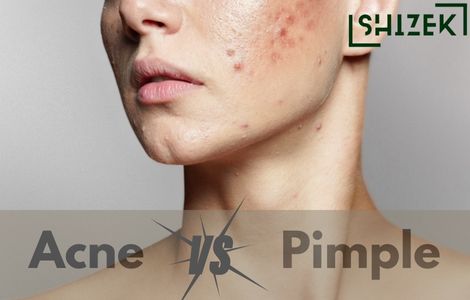Difference Between Disability and Disorder

The main difference between disability and disorder is that disability is a physical or mental impairment that substantially limits one or more major life activities, such as walking, seeing, hearing, etc. In contrast, disorder is a a medical condition or illness that causes distress, dysfunction, or impairment in a person’s daily life.
Another key difference between disability and disorder is that disability is typically a long-term or permanent condition. Meanwhile, the disorder can be temporary, chronic, or episodic, depending on the nature of the condition and the individual’s response to treatment.
Table of Content (TOC)
- Difference Between Disability and Disorder
- What is Disability?
- What is Disorder?
- Key Differences Between Disability and Disorder
Difference Between Disability and Disorder
For better clarity, here’s a tabular comparison between these two.
| Benchmark | Disability | Disorder |
|---|---|---|
| Definition | A physical or mental impairment that substantially limits one or more major life activities. | A specific medical condition or illness that causes distress, dysfunction, or impairment. |
| Scope | Broad, encompassing various physical, sensory, cognitive, or mental impairments. | Specific, referring to a particular medical condition or illness. |
| Impact | Significantly impacts a person’s ability to perform everyday tasks and participate in various aspects of life. | May or may not have a direct impact on a person’s ability to function, depending on the severity and the specific condition. |
| Permanence | Typically long-term or permanent, although the degree of impairment can vary over time. | Can be temporary, chronic, or episodic, depending on the nature of the condition and the individual’s response to treatment. |
| Legal Considerations | Often protected by laws and regulations that ensure equal rights and access for individuals with disabilities. | May or may not be directly addressed by specific laws, depending on the nature of the condition and its impact on the individual’s life. |
What is Disability?
Disability can be defined as a physical or mental impairment that significantly restricts a person’s ability to perform one or more major life activities, such as:
- Walking
- Seeing
- Hearing
- Learning
- Thinking
- Communicating
- Working, etc.
Disabilities can be present from birth (congenital), or they can develop later in life due to illness, injury, or chronic health conditions. Disability examples include blindness, deafness, mobility impairments, intellectual disabilities, autism, and mental health conditions.
What is Disorder?
Disorder is a specific medical condition or illness that affects a person’s physical, mental, or behavioural health. It can range from mild to severe and significantly impact a person’s ability to function. Disorders can be caused by a variety of factors, such as genetic factors, environmental factors, lifestyle choices, and traumatic experiences.
There are three types of disorders:
- Physical disorders: These include medical conditions that affect the body, such as heart disease, cancer, diabetes, and neurological disorders.
- Mental disorders: These are conditions that affect a person’s thoughts, emotions, and behaviours, such as depression, anxiety, schizophrenia, and bipolar disorder.
- Behavioural disorders: These involve patterns of disruptive or inappropriate behaviour, such as attention-deficit/hyperactivity disorder (ADHD), oppositional defiant disorder, and conduct disorder.
Key Differences Between Disability and Disorder
Here are the key differences between Disability vs Disorder:
- Disability is a physical or mental impairment that substantially limits one or more major life activities. In contrast, disorder is a specific medical condition or illness that causes distress, dysfunction, or impairment.
- Disability is a broader term encompassing various physical, sensory, cognitive, or mental impairments. On the other hand, the disorder is more specific, referring to a particular medical condition or illness.
- Disorders may or may not directly impact a person’s ability to function, depending on the severity and the specific condition. On the contrary, disabilities can significantly impact a person’s ability to perform everyday tasks and participate in various aspects of life.
- Disabilities are typically long-term or permanent conditions, although the degree of impairment can vary over time. Meanwhile, disorders can be temporary, chronic, or episodic, depending on the nature of the condition and the individual’s response to treatment.
- Disabilities are often protected by laws and regulations that ensure equal rights and access for individuals with disabilities. In contrast, disorders may or may not be directly addressed by specific laws, depending on the nature of the condition and its impact on the individual’s life.
Check Out Our Other Blogs
- Difference Between Disability and Disorder
- Difference Between Population Growth and Population Change
- Difference Between Lymph and Blood
- Difference Between Covaxin and Covishield
- Difference Between Menarche and Menopause
- Difference Between Malaria and Dengue
- Difference Between Oestrus Cycle and Menstrual Cycle
- 1 Egg Nutrition Facts
- 9 Health Benefits of Yoga
- 7 Days Diet Plan to Lose 5 Kg























































































































